
Since the Traverse Group rocks were once part of a vibrant ocean ecosystem, it should come as no surprise that other fossilized reef-dwelling species can be found on the same beaches and gravel pits as Petoskey stone. Snails, bryozoans, shellfish, and even petrified wood are all possible finds. These fossils will likely appear in your hunts for Petoskey stones.

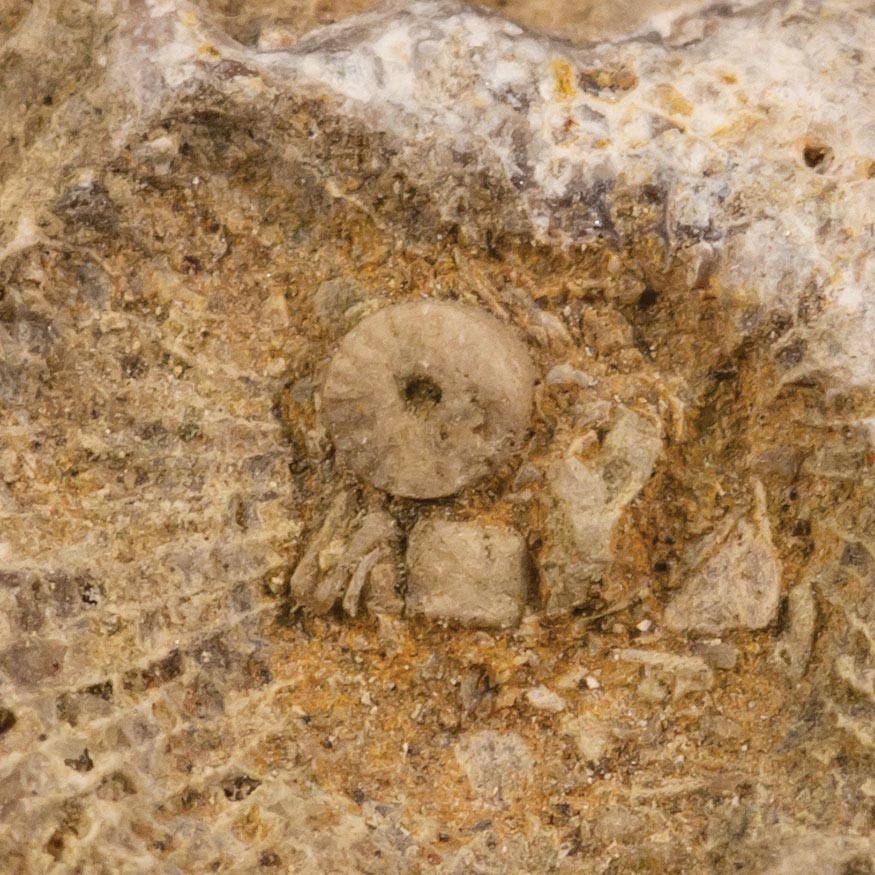
Crinoids—Nicknamed “sea lilies,” these were plant-like animals that anchored themselves on the seafloor with a long, tubular stem. When they died, the disc-shaped segments of the stem frequently separated and scattered into the reef. These appear as small circles in limestone, often with a hollow or a star-shaped center.
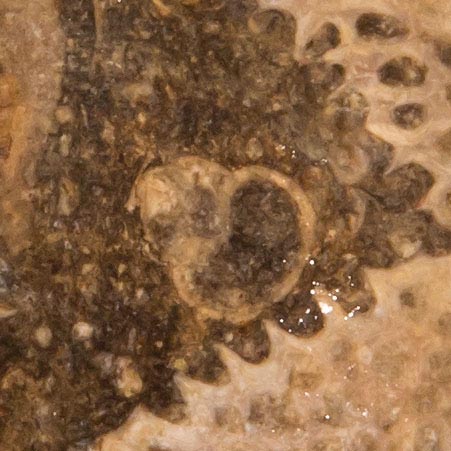
Gastropods—Typically snails or snail-like shells. Remains of these hard-shelled critters will appear as small coils or something like a cluster or chain of circular shapes. When seen in cross section, as is typical in broken reef limestone, they may appear as small outlined circular or “scoop”-shaped structures.
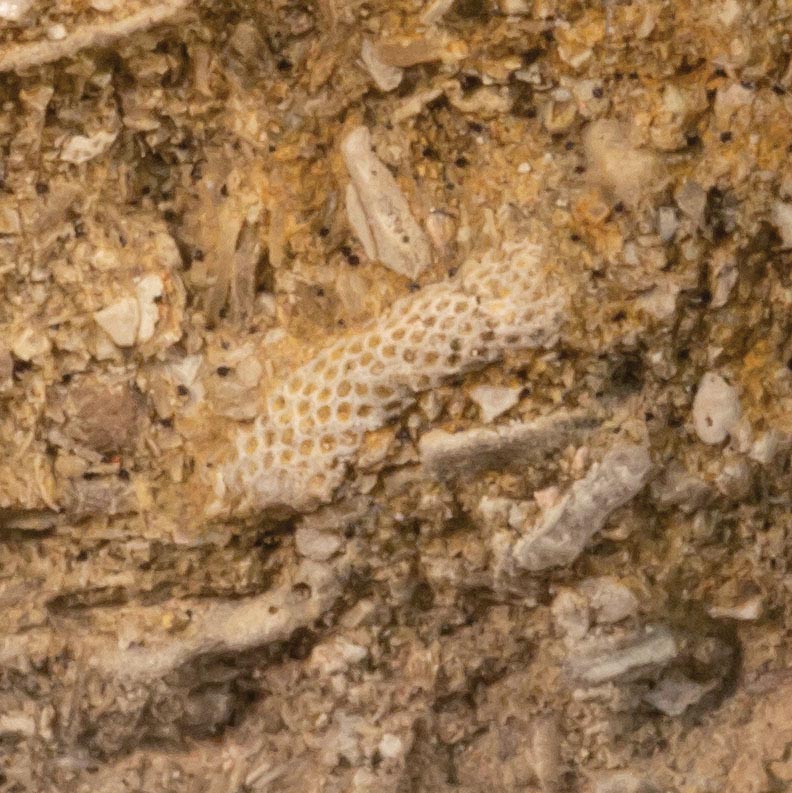
Bryozoans—Another group of colonial animals that share a skeleton, bryozoans are nicknamed “moss animals” due to the particularly plant-like appearance of their colonies. Still in today’s oceans, the individuals in a bryozoan colony are all clones that feed by filtering water through their bodies. Fossils appear very much like corals but have a finer appearance with countless tiny pores in their surfaces, and small fragments can almost appear sponge-like.
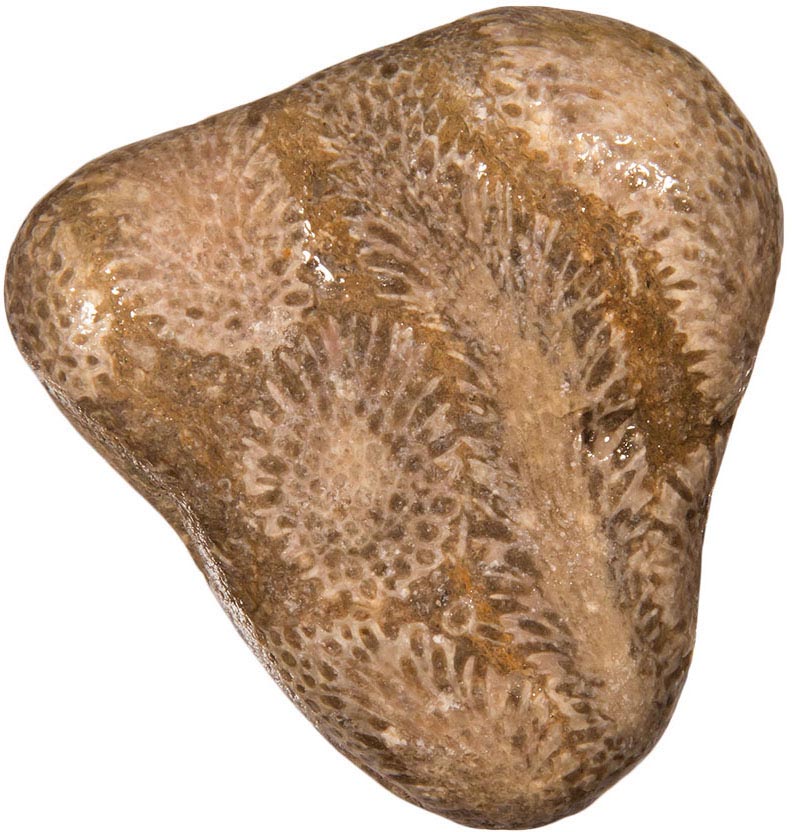

Shell Fragments—In many chunks of reef limestone, you’ll see find lots of small, curving or fan-like shapes—these are typically fragments of shells from gastropods (such as snails), bivalves (clam-like animals), or brachiopods. While whole specimens do exist in the area rocks, most will show up as little pieces, sometimes attached to Petoskey stones.
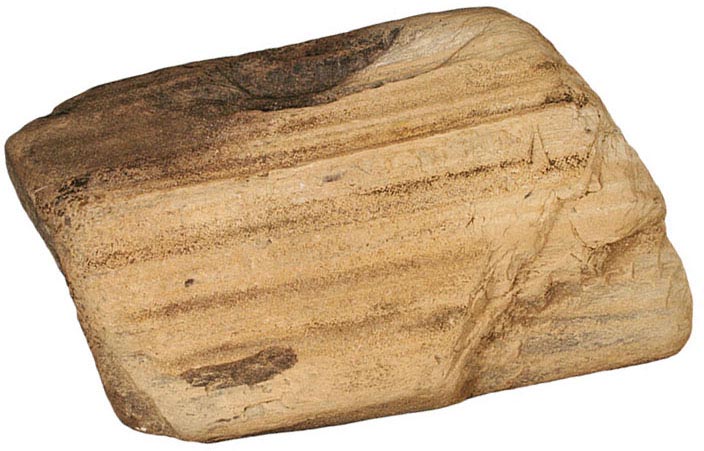
Petrified Wood—While certainly not a reef fossil, it is possible to find small pieces of fossilized wood, often called petrified wood, on Michigan’s beaches. This material, which is younger than the Devonian rocks, was deposited by the glaciers and mostly originated farther north. Identification can be tricky, since other rock fragments can look wood-like, but checking for wood grain and bark-like features will help.
Trilobites—These unusual looking animals lived on seafloors for nearly 300 million years but are all extinct today. Their hard armored bodies had a bulbous head and plate-like tail connected by rib-like segments between. These are fairly rare in Michigan’s Devonian rocks, especially whole, but can be found in the area. These are often the “grand prize” for Michigan fossil collectors; these are found in shale, particularly around Alpena.
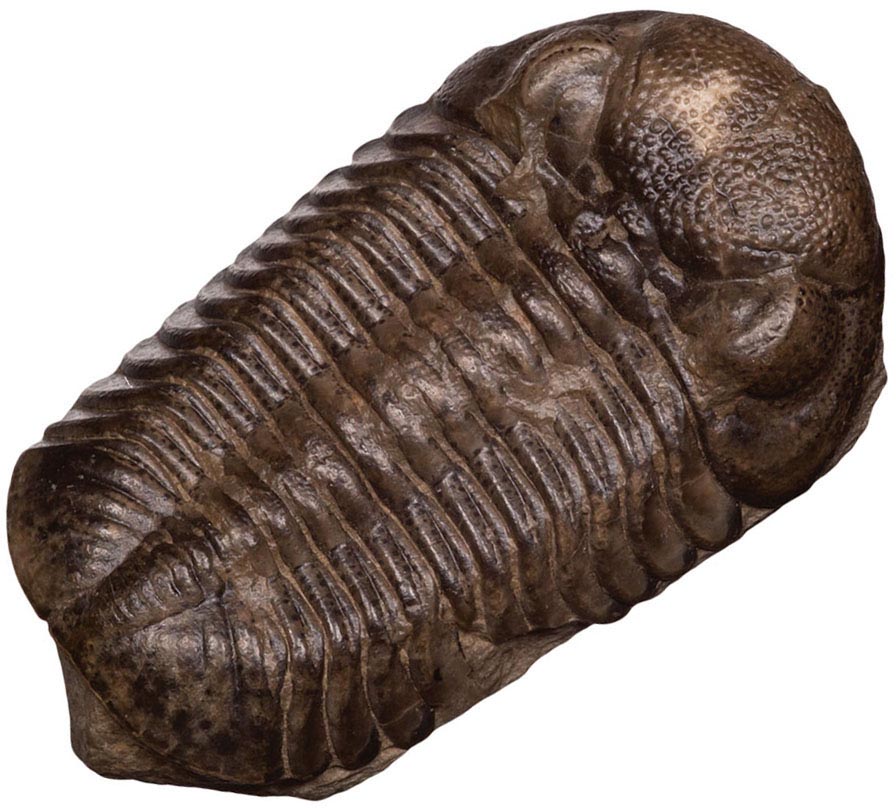
Trilobites from Michigan are rare and highly sought after. This specimen is actually from Ohio but is of Devonian age and belongs to a particular family of trilobite species that are found in the Traverse Group rocks. Michigan trilobite specimens will look very similar to this.